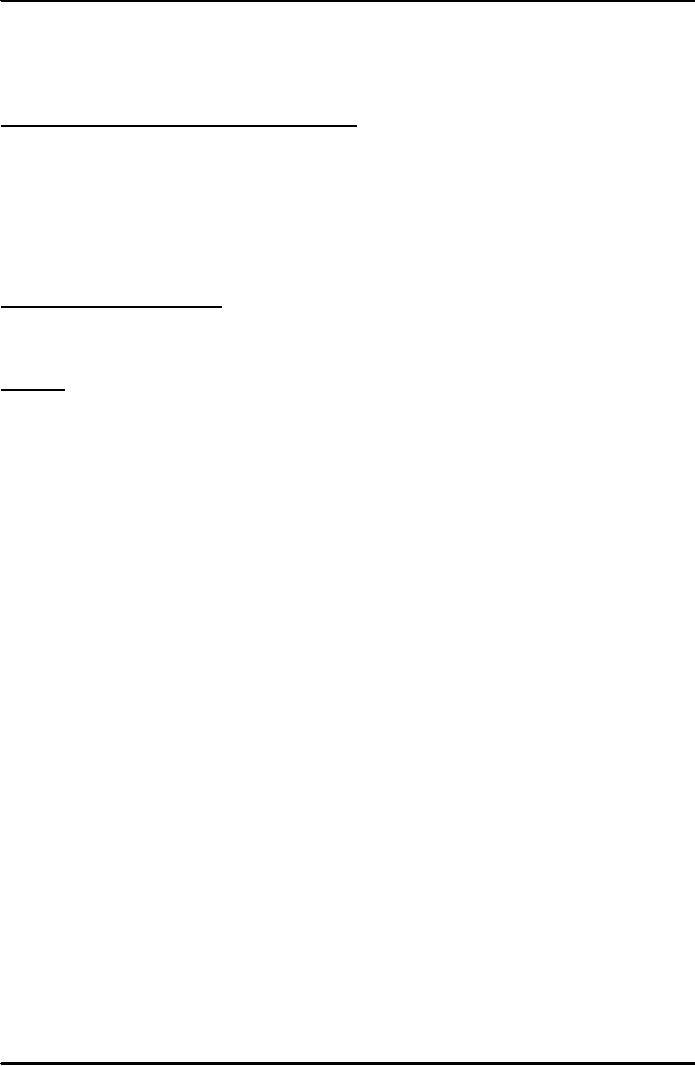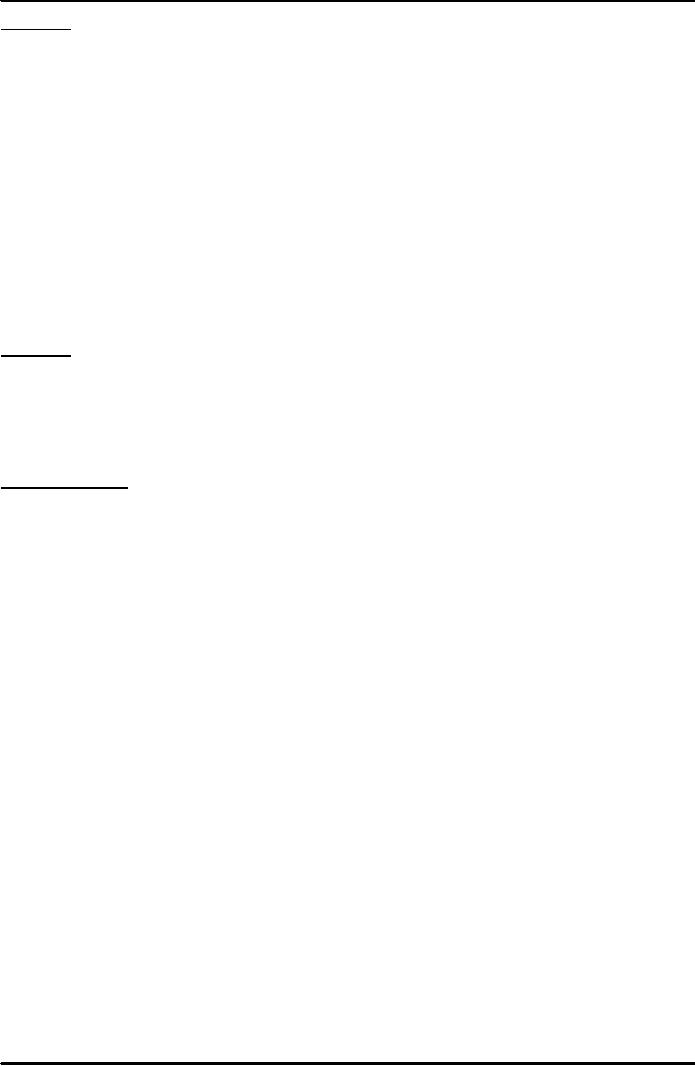 |
QUALITY CONTROL:International Quality Standards, MARKETING |
| << QUALITY CONTROL:Two Aspects of Quality, Manufactured Quality |
| MARKETING:Marketing Function, MARKETING PROCESS - STEPS >> |

SME
Management (MGT-601)
VU
Lesson
31
QUALITY
CONTROL
Dealing
with the quality standardization
under WTO.
Quality
Control Programs in Developing
Countries
�
Establish
Strong National Leadership &
Q.C Society.
�
Create
Govt. & Commercial Compulsion for
Reasonable levels of
Quality.
�
Establish
a Media For Exchange.
�
Establish
an Extensive Program for
Training.
�
National
Standardization Efforts.
�
Public
Awareness.
International
Quality Standards
If
each country had its
own set of standards,
companies in selling in international
markets would have
difficulty
in quality documentation standards in the
countries where they did
business.
ISO
9000
It
is set of standard governing
documentation quality program. Proving to
a qualified external examiner
that
they have completed with the entire
requirement certifies companies. Once
certified, companies are
listed
in a directory so that potential
customers can see which
companies have been
certified and to what
level.
Compliance with ISO 9000
standards says nothing about
the actual quality of a product.
Rather, it
indicates
to customers that companies
can provide documentation to support
whatever claims they
make
about
quality.
Five
Documents of ISO 9000
ISO
9000 actually consists of
five documents;
�
ISO
9000
�
ISO
9001
�
ISO
9002
�
ISO
9003
�
ISO
9004
ISO
9000
ISO
9000 is an overview Document, Which
Provide Guideline for use
and selection of other
standards.
ISO
9001
ISO
9001 is a Standard that
focuses on various aspects of
design, produce, install and
service products. It
also
includes management responsibility,
quality System, purchasing,
product design, and
inspection,
training
& Corrective action.
ISO
9002
ISO
9002 covers same area as
9001 for companies that
produce to customer's design or
have their design
and
service activities.
ISO
9003
ISO
9003 is most limited in
scope and addresses only
production process.
ISO
9004
ISO
9004 contains Guidelines interpreting
other standard.
86

SME
Management (MGT-601)
VU
ISO
14000
ISO
14000 requires participating
companies to keep track of their
raw material use and
their generation,
treatment
and disposal hazardous
wastes.
ISO
14000 is a series of five
standards that cover a number of
areas, including the
following.
�Environment
Management System. Requires
a plan to improve performance in
resource use and
pollutant
output.
�Environment
Evaluation Program. Specifies
guidelines for the certification of
companies.
�Environment
Labeling. Defines
terms such as recyclable,
energy efficient, and safe
for the ozone layer.
�Life
Cycle Assessment. Evaluates
the lifetime environmental impact
from the manufacture, use,
and
disposal
of a product.
To
maintain their certification, companies
must be inspected by outside,
private auditors on a regular
basis.
ISO
17025
The
main area under WTO
comes under quality control
in laboratory standards and the standard
that
deals
with it is ISO 17025. The
laboratory for testing under
this standard for quality
control is not
available
in Pakistan. The need is to have a new
one or up gradation of existing
labs so that we can
meet
the
requirements of WTO.
MARKETING
Role
of marketing
Improved
marketing is central to a small firm's
industrial strategy. Unfortunately,
many small firms
assume
that
the only requirement for success is to
open and wait for customers.
Perhaps, it is due to severe
limits
on
their resources. It is seldom
recognized that marketing is a complex
process affected by internal
external
factors.
Internal variable includes firm's
financial position, management capability
personnel resources,
products
offered. External variable includes
general economic conditions,
characteristics of population,
social
and cultural factors, competition,
government regulations etc.
Small
firms success depends on the ability to
plan, organize, staff and control
marketing activity in relation
to
internal and external
environment.
Marketing
is the performance of business activities
that direct the flow of goods
and services from the
producer
to consumer.
Small
firm's Advantage
Advantages
enjoyed by small firm in the field
of, marketing include realistic marketing
planning, shorter lines of
communication,
flexibility, and ability to
act quickly.
87
Table of Contents:
- THE HISTORY:Cottage Industry, CONCEPT OF SMALL BUSINESS
- THE RELATIONSHIP BETWEEN SMALL AND BIG BUSINESS:The SME’S in Pakistan
- THE ROLE OF ENTREPRENEURSHIPS IN SMEs:Focus and Perseverance Guide the Entrepreneur
- THE ROLE OF ENTREPRENEURSHIPS IN SMEs:Kinds of Entrepreneurs
- SMALL ENTREPRENEURS IN PAKISTAN:National Approaches
- THE DEVELOPMENT OF SMES IN PAKISTAN:The Industrial History of Pakistan
- GOVERNMENT’S EFFORT TOWARDS SME DEVELOPMENT:Financing Programs
- THIS LECTURE DEFINES THE ROLE OF NGOS AND SMEDA:Mission Statement
- ISSUES AND POLICY DEVELOPMENT FOR SME:Monitoring Developments
- ISSUES IN SME DEVELOPMENT:Business Environment, Taxation Issues
- LABOR ISSUES:Delivery of Assistance and Access to Resources, Finance
- HUMAN RESOURCE DEVELOPMENT:Market and Industry Information, Monitoring Developments
- MARKET AND INDUSTRY INFORMATION:Measuring Our Success, Gender Development
- LONG TERM ISSUES:Law and Order, Intellectual Property Rights, Infrastructure
- THE START UP PROCESS OF A SMALL ENTERPRISE:Steps in Innovative Process
- TECHNICAL FEASIBILITY:Market Feasibility, Market Testing
- FINANCIAL FEASIBILITY:Financial resources and other costs, Cash Flow Analysis
- ASSESSMENT OF PERSONAL REQUIREMENTS AND ORGANIZATIONAL CAPABILITIES:Analysis of Competition
- Post Operative Problems of a New Enterprise:Environmental Causes
- HOW TO APPROACH LENDERS:Bank’s Lending Criteria, Specific Purpose, Be Well Prepared
- WHAT A BANK NEEDS TO KNOW ABOUT YOU:General Credentials, Financial Situation
- COMMERCIAL INFORMATION:Checklist for Feasibility Study, The Market
- GUARANTEES OR COLLATERAL YOU CAN OFFER:Typical Collateral
- Aspects of Financial Management:WINNING THE CASH FLOW WAR, The Realization Concept
- MEANING OF WORKING CAPITAL:Gross Working Capital, Net Working Capital
- RECRUITMENT, SELECTION AND TRAINING:Job Description, Job Specification
- SELECTION AND HIRING THE RIGHT CANDIDATE:Application Blank, Orientation
- TRAINGING AND DEVELOPMENT:Knowledge, Methods of Training
- CONDITIONS THAT STIMULATE LEARNING:Limitations of Performance Appraisal, Discipline
- QUALITY CONTROL:Two Aspects of Quality, Manufactured Quality
- QUALITY CONTROL:International Quality Standards, MARKETING
- MARKETING:Marketing Function, MARKETING PROCESS - STEPS
- MARKETING:Controllable Variable, Marketing Uncontrollable, Marketing Mix
- MARKETING:Demerits of Product Mix, Development of new product, SMEDA
- ROLE OF TECHNOLOGY:Training programmes, Publications
- ROLE OF TECHNOLOGY:Measure to Undertake for Promoting Framework.
- EXPORT POTENTIAL OF SME IN DEVELOPING COUNTRIES I:Commonly Seen Assistance Programme
- EXPORT POTENTIAL OF SME IN DEVELOPING Countries. II:At the national level
- WORLD TRADE ORGANIZATION (WTO):WTO Agreements: Salient Features
- WTO MINISTERIAL CONFERENCES:PAKISTAN AND WTO
- WORLD TRADE ORGANIZATION (WTO) PAKISTAN & WTO. II:International Treaties
- WORLD TRADE ORGANIZATION (WTO) PAKISTAN & WTO. III:Agriculture
- WORLD TRADE ORGANIZATION (WTO):PAKISTAN & WTO. III
- WORLD TRADE ORGANIZATION (WTO):CONCLUSIONS AND RECOMMENDATIONS
- SUMMARY & CONCLUSIONS:Financing Tool, Financing Tool